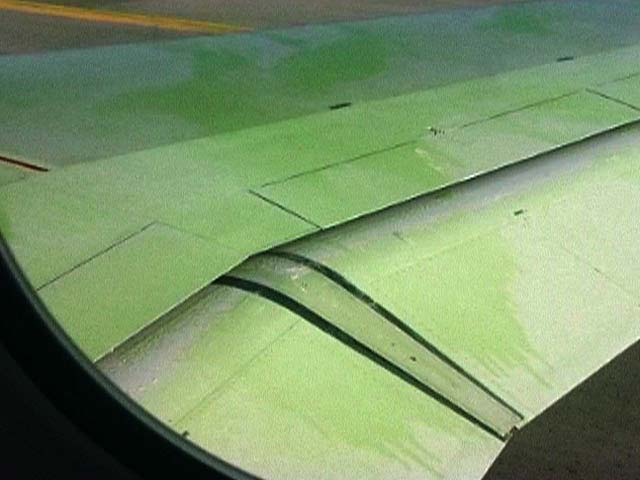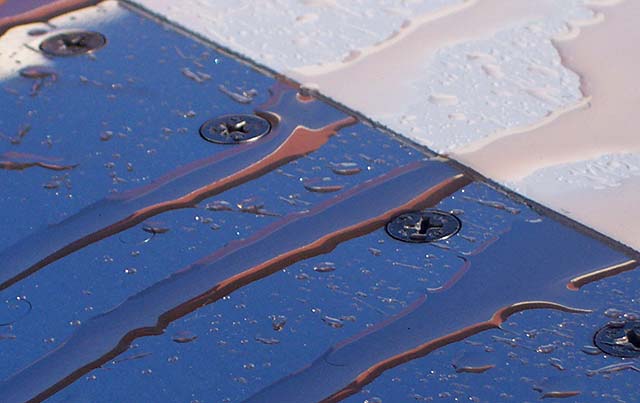A Pilot's Guide to Ground Icing
Module III - Fluid Basics
What you need to know
Section: How Fluids Work
Start This SectionHow Fluids Work Fluid Basics
De-icing and anti-icing fluids are specially formulated to assist in removing ice, snow and frost from the exterior surfaces of aircraft. These fluids are also known as freezing point depressant (FPD) fluids. Fluids that are acceptable to use on aircraft are mixtures of:
- Glycol, to lower the freezing point and prevent formation of ice contamination at temperatures below freezing. Note: Mixtures are typically propylene, ethylene or diethylene glycol.
- Water
- Corrosion inhibitors, to protect the skin of your aircraft.
- Wetting agents, to allow the fluid to conform to the aircraft surfaces.
- Dye, to visually aid Type identification.
How Fluids Work Fluid Basics
Only certain fluids that meet SAE specifications are qualified for use on aircraft. Fluids that are tested and qualified to use on your aircraft have been tested for:
Material compatibility: to ensure there is no reaction between the fluid and typical materials used on the aircraft (e.g., metals, painted surfaces, aerodynamic & environmental sealants and acrylic windows).
Aerodynamic acceptance: to ensure the fluids do not compromise the aerodynamics of the aircraft at the point of take-off; ideally the fluids blow or shear off the wing & tail surfaces during the take-off roll.
Further Information
Lists of qualified fluids can be found with each country’s Holdover Time Literature (be sure to check for the current version) or at:

Federal Aviation Administration (FAA)

References for fluids:
- "Anti-Icing Materials International Laboratory"
- SAE AMS1424 - "Deicing/Anti-Icing Fluid, Aircraft, SAE Type I"
- SAE AMS1428 - "Fluid, Aircraft Deicing/Anti-Icing, Non-Newtonian, (Pseudoplastic), SAE Types II, III, and IV"
How Fluids Work Fluid Basics
Caution
Only use qualified fluids in accordance with the aircraft manufacturer's instructions.
How Fluids Work Fluid Basics

There is an ethanol-based fluid called Kilfrost RDF (Rapid De-IcingFluid). This is an aircraft de-icing fluid that is widely available in the UK at smaller airfields. It is designed to be applied cold, not heated, due to its low flash point.
This fluid is custom-made to remove frost and light contamination from aircraft surfaces with-out damaging the aircraft and has been tested for material compatibility, but not aerodynamic acceptance. Generally, after removing the contamination the fluid evaporates and should leave a clean surface. Containers with this fluid should be clearly marked.
Caution


Ethanol-based fluid specially formulated for aircraft de-icing purposes. It is available at smaller airfields in the United Kingdom.
How Fluids Work Fluid Basics
Caution


Ethanol-based fluid specially formulated for aircraft de-icing purposes. It is available at smaller airfields in the United Kingdom.





